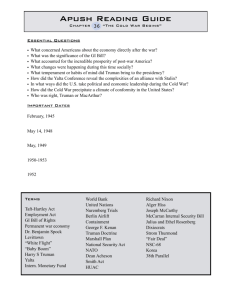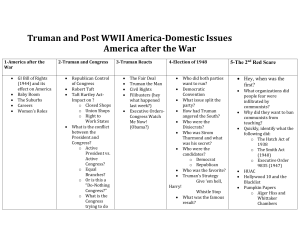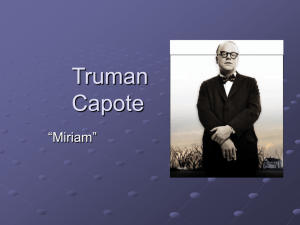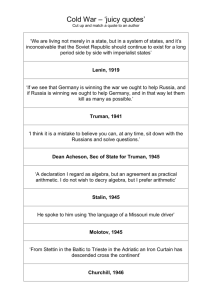Life After WWII
advertisement
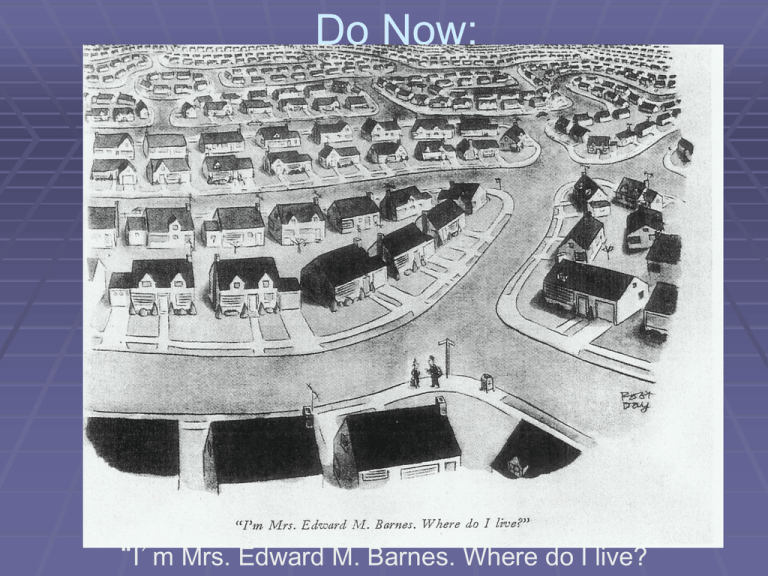
Do Now: “I’m Mrs. Edward M. Barnes. Where do I live? What words or phrases would you use to describe the housing development depicted in this cartoon? How do you think the woman in the cartoon Mrs. Edward M. Barnes, feels about living in a suburban development? Why do you think Americans in the 1950s wanted to live in a housing development like this one? Life After WWII Do Now: 2/26 “The War is Over!” What problems might arise in the post-war era? at home? abroad? GI Bill of Rights Passed in 1944 by Congress Helped veterans return to civilian life Paid part of their tuition Guaranteed 1yrs worth of unemployment Offered low interest federal loans- many used these loans to buy a home, farm, or business The Housing Crisis Returning veterans faced a housing shortage Lived in cramped apartments or with relatives The answer to the housing crisis was the newly developed suburbs Levittown The 1st suburb in Long Island, NY Developed by William Levitt Homes built in 16 minutes (assembly line) and cost only $7,000 Could be rented for $65/m (2 bedrooms, 1 bathroom, kitchen, living room, and appliances) All homes looked the same-zoning laws ensured that they would stay that way Redefining the Family Women didn’t want to give up their independence (jobs) Men traditionally breadwinners Divorce rate rose (1950- more than 1,000,000 war marriages ended in divorce) Economic Adjustment Wartime » peacetime economy War contracts cancelled and defense workers laid off Unemployment increased Prices skyrocketed when the OPA cancelled the controls on inflation- for 2yrs until the supply caught up with the demand Wages were less 4.5 million workers went on strike Recovery Congress placed controls on prices, wages, and rent Supply eventually caught up with the demand & wages increased because people where spending their savings Americans prospered in the 1950s“the affluent society” The threat of the Cold War kept America spending on defense and allowing to employ workers Truman would not allow workers to strike “The buck stops here” Threatened to draft anyone striking Ordered them to work 1946 Congressional Elections Republican Party won control of both the Senate and House of Representatives 80th Congress ignored Truman’s domestic proposals 1947- passed the Taft-Hartley Act Overturned many rights won by unions Passed over Truman’s veto Truman Supports Civil Rights “I am asking for equality of opportunity for all human beings,” “…and if that ends up in my failure to be re-elected, that failure will be in good cause.” Wanted Congress to support a federal anti-lynching law, abolition of the poll tax, and set up a body to prevent racial discrimination in hiring (Congress refused) 1948 Truman integrated the armed forces Also, ordered an end to discrimination in the hiring of gov’t employees Supreme Court said no more discrimination in residential neighborhoods 1947- Jackie Robinson integrated baseball 1948 Election Truman-Democrats Dewey- Republicans Strom Thurmond- Dixiecrats 303 Electoral College Votes 189 39 Southern Democrats Wallace- Progressive Party Truman’s “Give em hell, Harry” Traveled the country campaigning 0 The Fair Deal Truman’s Domestic Program Raised Minimum Wage- 40 ¢ - 75 ¢ Extended Social Security Coverage to 10 million more people Initiated flood control projects Provided financial support for cities to clear out slums and build 810,000 units for low-income families
